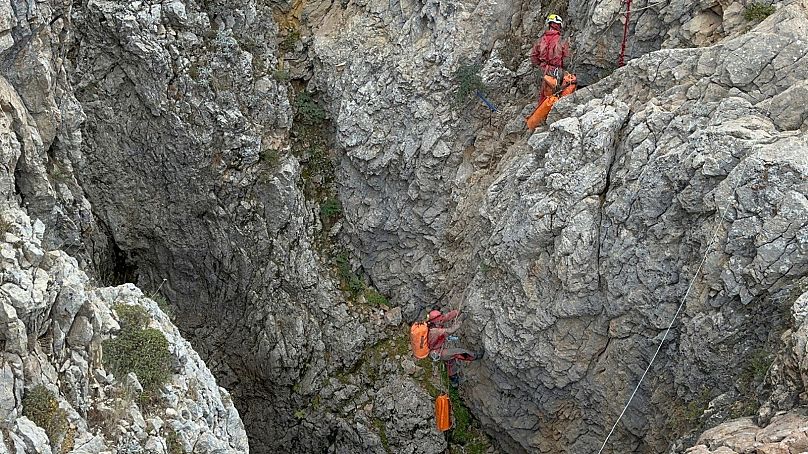More than 170 people from around the world face a huge task as the rescue operation to retrieve the American researcher is likely to take days.
A researcher who fell ill almost 1,000 metres below the entrance of a cave in Turkey has recovered sufficiently for rescue teams to start the process of moving him out.
The operation could last three or four days, a Turkish official said on Friday.
Mark Dickey, a 40-year-old experienced caver, became ill with stomach bleeding during an expedition with a handful of others in the Morca cave in southern Turkey’s Taurus Mountains.
Rescuers from across Europe have rushed there to help treat Dickey and to extract him from the cave.
“The doctors we sent down were very successful in treating him,” Cenk Yildiz, a regional official from Turkey’s disaster relief agency, AFAD, said. “We are now in a position to evacuate him.”
“This is a difficult operation. It would take a (healthy) person 16 hours to come out. This operation will last at least three or four days,” Yildiz added. “Our priority is health. Our aim is to conclude this operation without anyone coming under any danger.
Rescuers believe Dickey will have to stop and rest frequently on the way up.
Another Turkish official said rescuers were waiting for doctors to give the go-ahead for the difficult operation to begin.
Recep Salci, the head of AFAD’s search and rescue department, said the plan was to lift Dickey on a stretcher but to use a “security belt” system to lift him through the cave's narrow openings.
“We are trying to expand the narrow areas by making small explosions, by breaking some areas,” Salci said.
Doctors gave Dickey IV fluids and four litres of blood inside the cave, he said. More than 30 rescuers were inside the cave on Friday afternoon, and teams comprised of a doctor and three or four others take turns staying with the American at all times, Salci said.
“Our aim is to bring him out and to have him hospitalised as soon as possible,“ he said.
The European Cave Rescue Association said on its website on Friday that the cave had been divided into seven sections, with various rescue teams taking responsibility for each of the levels down the cave.
More than 170 people, including doctors, paramedics and experienced cavers, are involved in the rescue operation.
Turkish authorities made a video message available that showed Dickey standing and moving around on Thursday. While alert and talking, he said he was not “healed on the inside” and needed a lot of help to get out of the cave.
He thanked the caving community and the Turkish government for their efforts to rescue him.
“The caving world is a really tight-knit group, and it’s amazing to see how many people have responded on the surface,” Dickey said in the video. “I do know that the quick response of the Turkish government to get the medical supplies that I needed, in my opinion, saved my life. I was very close to the edge.”
The New Jersey-based cave rescue group that Dickey is affiliated with said he had been bleeding and losing fluid from his stomach but had stopped vomiting and ate for the first time in days. It was not clear what caused the medical issue.












